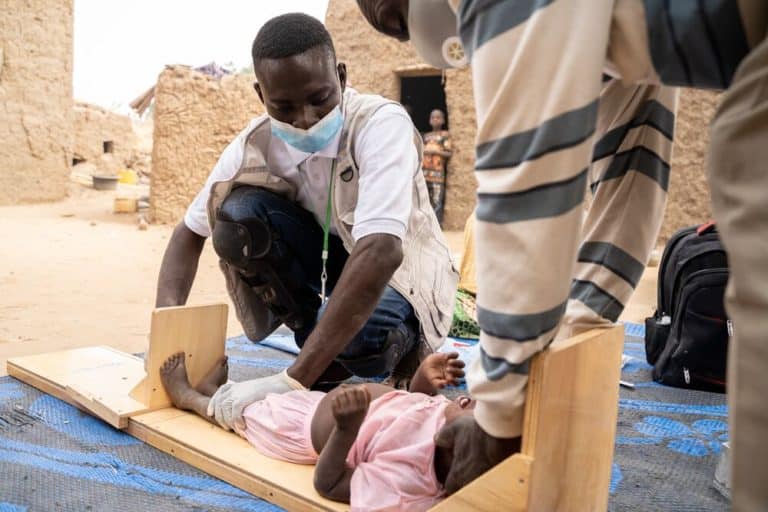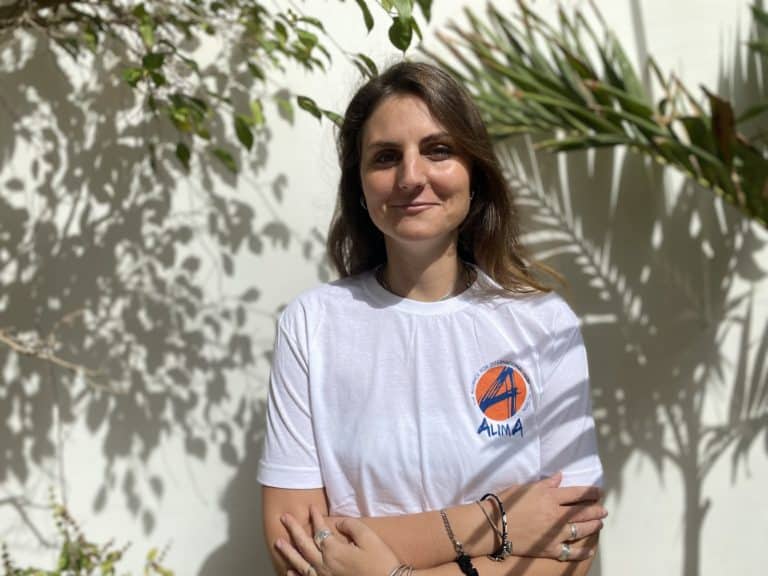By Dr. Moumouni Kinda, Chief Executive Officer of ALIMA
The state of emergency is not the same all over the world: in Africa, food insecurity is currently the biggest crisis. In medical terms we speak of SAM, “Severe Acute Malnutrition”, when the life of a person, very often children under 5 years old, is in imminent danger because they can’t feed themselves adequately and/or are suffering from diseases. In southern Niger, a growing number of such people are coming to hospitals and nutritional recovery centers. The 600 beds available in the area are no longer sufficient; we are overwhelmed by an influx of children, the majority of whom come from across the border with Nigeria.
For the humanitarian organizations that have been present on the ground for decades, this spike in hospitalizations is alarming. We know that the ‘lean’ season between July and October corresponds to seasonal peaks in malnutrition: food stocks from previous harvests are almost exhausted and the rainy season favors increased transmission of malaria, which weakens younger children in particular. But this year we foresee a far more serious situation that may threaten our long fight against hunger and malnutrition in this part of the Sahel Region.
The crisis of the four Cs
Annual global figures from international organizations (FAO, WHO, UNICEF) confirm that the situation has worsened dramatically since 2020 and the start of the Covid-19 pandemic. The 2021 report on food security and nutrition in the world, published in July 2021, estimates that the number of people suffering from hunger will increase by 118 million compared to 2019 – almost half of which will be in Africa.
This situation is due to the combination of four crises: COVID-19 and its economic impact on household incomes and food costs; conflicts resulting in millions of displaced people in the so-called ‘three borders’ area (Mali, Niger, Burkina Faso) and in northwestern Nigeria; climate change and its consequences on agricultural yields; and budget cuts in nutrition and pediatric humanitarian operations. This cocktail of the “four Cs” is a poison we must fight against, together with our local and international partners, to prevent hunger from killing more people than the virus in 2021 and 2022. Therefore, our priority action must be twofold: to vaccinate against Covid-19 and to treat and prevent malnutrition.
Transforming the treatment of malnutrition
There is no vaccine against hunger. However, we have developed expertise over the last 10 years on how to fight effectively against this scourge. First of all, it is important to know how to detect child malnutrition as early as possible, so that it can be taken care of at an early stage. We have developed a simple method: thanks to a tri-colored bracelet, families can measure the mid-upper arm circumference of their children and, depending on the color indication, take them to the health center. This tool is now used in 26 countries around the world by 12 organizations, including UNICEF and the World Food Program. Ease of use and user autonomy are key success factors of the tool.
As far as curative treatment is concerned, we are advocating for a simplified management of children by eliminating the coexistence of several protocols, a source of confusion and errors, and by using a single ready-to-use therapeutic food. This new approach, validated by a scientific evaluation (OptiMA research program in Burkina Faso and in the Democratic Republic of the Congo), facilitates the follow-up of sick children and the support of their caregivers while offering the potential of treating twice the number of children with the same quantity of nutritional inputs compared to the old protocol. In addition, we need to rethink the global organization of humanitarian aid by accelerating the full involvement of local actors, as we learned from the Covid-19 crisis, which made it difficult for large international NGOs to act.
Autonomy, simplification, innovation and relocation are the principles of effectiveness that should guide the fight against malnutrition and convince all actors that we can still win this fight.
Investing in medical response to save lives
At the end of 2020, we launched a call to put child malnutrition at the heart of the fight against COVID-19 in Africa. We denounced the cuts or delays in funding from international donors. In countries such as Niger, the European Union’s aid for the treatment of malnutrition fell from over 24 million Euros in 2015 to around 6 million in 2021… This policy of disengagement is dangerous for the populations, especially when food insecurity is soaring, with a 67% increase in this region since last year. While we acknowledge that it is necessary to attack the roots of the problem by adapting food systems to climate change, by fighting poverty and inequality, and by pacifying the Sahel, let us not forget the medical-nutritional emergency. We need additional investments and public policies in order to strengthen health systems and spare many victims.
As African doctors working in emergency medicine, we will bring this message to all the forums (UN, WHO), in all the Summits (on food systems, on climate, on nutrition) so that leaders do not look away and rather put research and medical innovation at the heart of the international agenda aiming at the eradication of malnutrition by 2030. Because we believe that hunger in the world is a scourge that must be fought on a global scale, and not just the fate of some continents!
This article was first published as an op-ed on Lemonde.fr



